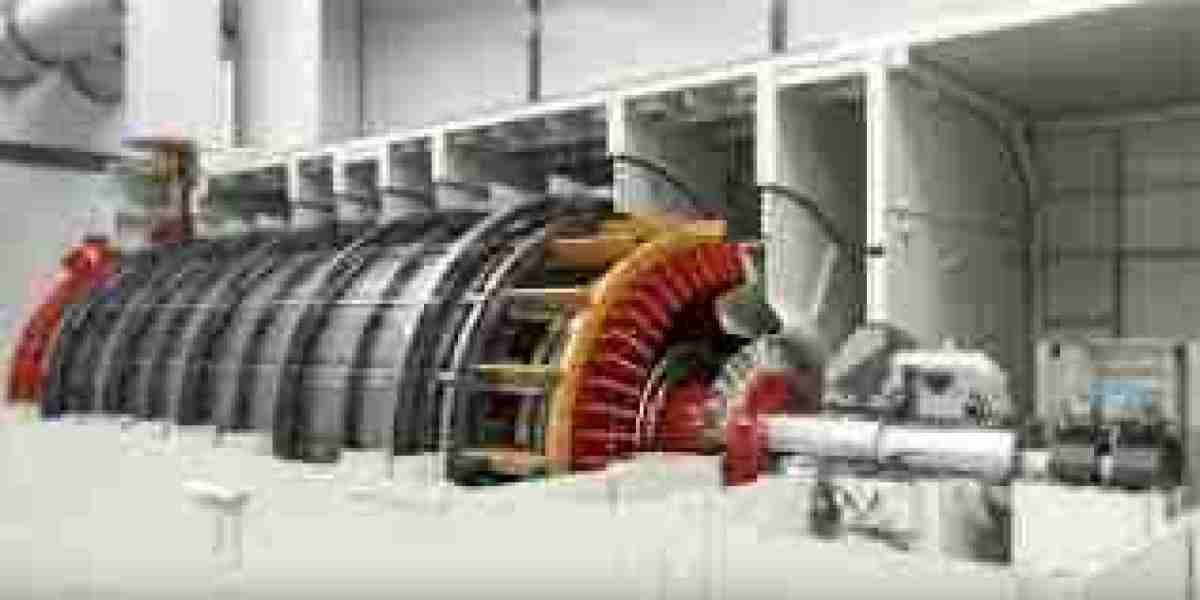The Synchronous Condenser Market is poised for significant growth in Europe, North America, and Asia-Pacific, driven by the need for grid stability amidst increasing renewable energy integration and infrastructure modernization. Stakeholders in these regions have substantial opportunities to contribute to and benefit from the evolving energy landscape.
Market Overview
The synchronous condenser market is experiencing robust growth, propelled by the increasing need for grid stability and the integration of renewable energy sources. In 2023, the market was valued at approximately USD 1.4 billion and is projected to grow at a compound annual growth rate (CAGR) of 4.8% from 2024 to 2032. This growth is attributed to the rising demand for reactive power support and the modernization of aging power infrastructure.
Demand Trends in Utilities
Utilities are the primary end-users of synchronous condensers, accounting for the largest market share. The increasing integration of renewable energy sources, such as wind and solar, has introduced variability and intermittency into power grids. Synchronous condensers help mitigate these challenges by providing dynamic voltage support and reactive power compensation, ensuring grid stability. In North America, for instance, the phasing out of conventional power plants has led utilities to invest in synchronous condensers to maintain grid reliability.
Industrial Applications
The industrial sector is witnessing a growing adoption of synchronous condensers, particularly in energy-intensive industries like manufacturing, mining, and petrochemicals. These industries require stable voltage levels and power quality to ensure efficient operations. Synchronous condensers assist in power factor correction and voltage regulation, reducing energy losses and improving equipment lifespan. Moreover, industries are increasingly focusing on sustainability and energy efficiency, further driving the demand for synchronous condensers.
Role in Power Systems
Synchronous condensers play a pivotal role in modern power systems, especially with the increasing penetration of renewable energy sources. They provide essential services such as:
- Voltage Regulation: Maintaining voltage levels within desired ranges to ensure power quality.
- Reactive Power Support: Balancing reactive power in the system to prevent voltage instability.
- Inertia Provision: Offering rotational inertia to help stabilize frequency fluctuations caused by sudden changes in power supply or demand.
These functions are crucial for the reliable operation of power systems, particularly as traditional synchronous generators are retired.
Regional Dynamics
North America: The region leads in the adoption of synchronous condensers, driven by grid modernization initiatives and the integration of renewable energy. The U.S. government has invested significantly in enhancing grid resilience, with synchronous condensers playing a key role.
Europe: Europe is witnessing substantial growth due to aggressive renewable energy targets and the need for grid stability solutions. Countries like Germany, the UK, and France are investing in synchronous condensers to manage voltage variations and support renewable integration.
Asia-Pacific: Rapid industrialization and urbanization in countries like China and India are driving electricity demand. Governments are focusing on integrating renewable energy sources, leading to increased adoption of synchronous condensers to ensure grid stability.
Technological Advancements
The synchronous condenser market is benefiting from technological innovations aimed at enhancing performance and efficiency:
- Digital Integration: Advanced monitoring and control systems enable real-time data analysis, predictive maintenance, and improved operational efficiency.
- Eco-Friendly Designs: Manufacturers are focusing on sustainable materials and energy-efficient components to reduce environmental impact.
- Modular Solutions: Demand for customized and modular solutions is rising, allowing for scalable and versatile synchronous condenser topologies that can be easily integrated into existing infrastructure.
Market Drivers
- Renewable Energy Integration: The global shift towards renewable energy sources increases the need for grid stabilization solutions.
- Grid Modernization Initiatives: Governments worldwide are investing in upgrading power infrastructure to accommodate new energy sources and technologies.
- Regulatory Support: Policies promoting renewable energy integration and grid reliability are encouraging the adoption of synchronous condensers.
Challenges
- High Initial Capital Investment: The cost of purchasing and installing synchronous condensers can be significant, potentially deterring adoption.
- Competition from Alternatives: Technologies like Static VAR Compensators (SVCs) and Static Synchronous Compensators (STATCOMs) offer similar benefits and may be preferred in certain scenarios.
- Regulatory and Compliance Challenges: The regulatory landscape surrounding the energy sector is complex and constantly evolving, which can pose challenges for the adoption of synchronous condensers.
Future Outlook
The synchronous condensers market is poised for robust growth through 2030, driven by regulatory mandates for grid reliability, frequency control, and black start capabilities. As renewable penetration deepens globally, the need for inertia and dynamic reactive power will intensify, underscoring synchronous condensers’ critical role.
With ongoing technological advancements reducing costs and enhancing performance, synchronous condensers are likely to remain a foundational technology for grid operators striving to maintain resilient, stable, and reliable power systems in a low-carbon future.
Conclusion
The synchronous condenser market is poised for significant growth, driven by the increasing integration of renewable energy sources and the need for enhanced grid stability. Utilities and industrial sectors are recognizing the value of synchronous condensers in ensuring reliable and efficient power systems. Technological advancements and supportive regulatory frameworks further bolster the market's prospects. However, challenges such as high capital costs and competition from alternative technologies need to be addressed to fully realize the market's potential.




